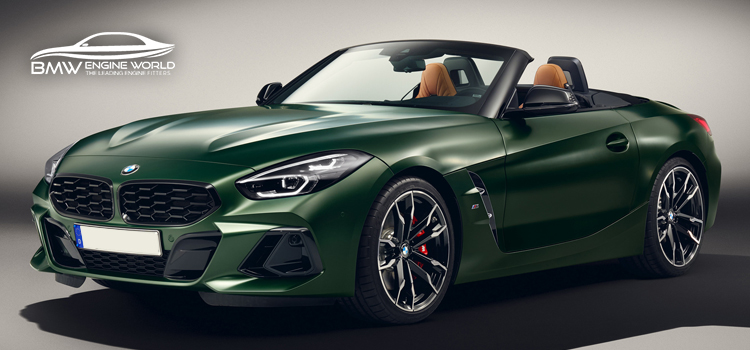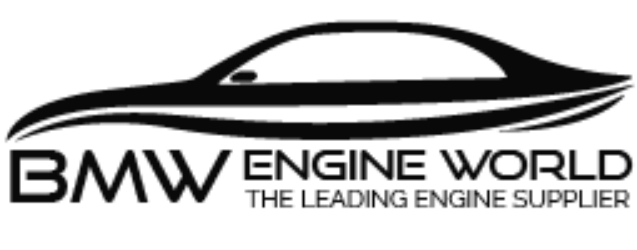How Does The BMW Z Series Engine Integrate With Different Transmission Types?

The BMW Z Series has long been celebrated for its sporty performance and sleek design. One of the key factors contributing to its dynamic driving experience is the harmonious integration of its engines with various transmission types. We explores how the BMW Z Series engine work with different transmission systems, including manual, automatic, and dual-clutch transmissions. We’ll also touch upon considerations for engine replacement, reconditioned engines, and the supply and fit of these crucial components.
Engine Types in the BMW Z Series
The BMW Z Series boasts a diverse range of engines, from the zippy inline-fours to powerful inline-sixes. Each engine type is designed to deliver a unique driving experience, whether it’s the spirited acceleration of the Z4 M40i’s turbocharged inline-six or the efficient performance of the Z4 sDrive20i’s inline-four. BMW engineers meticulously match these engines with various transmission types to optimize performance and driving pleasure. Understanding the specific characteristics of each engine helps in appreciating how it integrates with different transmission systems, ensuring that the power delivery and driving dynamics are consistently top-notch.
Manual Transmissions: Engagement and Precision
Manual transmissions in the BMW Z Series offer a pure driving experience, allowing drivers to have direct control over gear changes. These transmissions are engineered to complement the engines’ performance characteristics, offering a blend of engagement and precision. The gear ratios are carefully chosen to match the engine’s power band, enhancing acceleration and responsiveness. For instance, the Z4 M40i’s manual transmission is designed to harness the full potential of its turbocharged inline-six, providing a more connected and visceral driving experience. The integration of manual transmissions with BMW engines is not just about performance but also about maintaining the driver’s involvement in the driving process.
Automatic Transmissions: Smoothness and Efficiency
BMW’s automatic transmissions, including the 8-speed Steptronic and the 7-speed dual-clutch, are designed to provide smooth and efficient gear changes without compromising performance. These transmissions use advanced electronic controls and adaptive algorithms to match engine power delivery with driving conditions, ensuring optimal performance and fuel efficiency. The integration process involves aligning the transmission’s shift logic with the engine’s power curve, resulting in seamless acceleration and smooth gear transitions. For models like the Z4 M40i, the automatic transmission is tuned to handle the substantial power output of the inline-six engine, ensuring that the car remains agile and responsive in various driving scenarios.
Dual-Clutch Transmissions: Rapid Shifts and Performance
Dual-clutch transmissions (DCTs) represent a blend of manual and automatic transmission technologies, offering the best of both worlds. In the BMW Z Series, DCTs provide rapid gear shifts with minimal interruption to engine power delivery, resulting in enhanced performance and acceleration. The integration of a DCT with a high-performance engine, such as the Z4 M40i’s turbocharged inline-six, involves sophisticated control systems that manage gear changes with precision. The DCT’s ability to pre-select gears and execute shifts almost instantaneously complements the engine’s performance characteristics, allowing drivers to experience a high level of responsiveness and driving pleasure.
Engine Replacement Considerations
Engine replacement is a significant aspect of maintaining or upgrading a BMW Z Series. When considering an engine replacement, it’s crucial to ensure compatibility with the existing transmission system. Engine replacements often involve selecting engines with similar power characteristics and mounting points to fit seamlessly with the transmission. For instance, replacing a standard inline-four engine with a more powerful inline-six requires careful consideration of the transmission’s capacity to handle the increased power and torque. Proper alignment and integration are essential to avoid performance issues and ensure that the vehicle maintains its driving dynamics and reliability.
Reconditioned Engines: A Cost-Effective Alternative
Reconditioned engines offer a cost-effective alternative to new engine replacements, especially for older BMW Z Series models. These engines are refurbished to meet factory specifications, providing a reliable performance boost while being more affordable than brand-new engines. When fitting a reconditioned engine, it’s important to ensure that it integrates well with the existing transmission system. Reconditioned engines should match the original engine’s power output and torque characteristics to maintain the vehicle’s performance and handling. Proper fitting and alignment are crucial to ensure that the reconditioned engine delivers the expected performance without compromising the vehicle’s overall driving experience.
Supply and Fit: Ensuring Optimal Integration
The supply and fit process involves sourcing and installing engines and transmissions to ensure optimal integration and performance. For BMW Z Series vehicles, this process requires careful selection of compatible parts and professional installation to achieve the desired performance and reliability. Whether replacing an engine or upgrading a transmission, the supply and fit process should involve sourcing high-quality components and employing experienced technicians to perform the installation. Ensuring that the engine and transmission are correctly matched and installed is vital for achieving the best possible driving experience and maintaining the vehicle’s longevity.
Conclusion
The integration of BMW Z Series engines with various transmission types is a testament to BMW’s commitment to performance and driving pleasure. Whether it’s the direct engagement of a manual transmission, the smooth efficiency of an automatic, or the rapid shifts of a dual-clutch system, each transmission type is carefully matched with its corresponding engine to deliver an exceptional driving experience. When considering engine replacement or the use of reconditioned engines, it’s essential to ensure compatibility and proper fitting to maintain performance and reliability. The supply and fit of these components play a crucial role in achieving the optimal integration necessary for the BMW Z Series to perform at its best.


